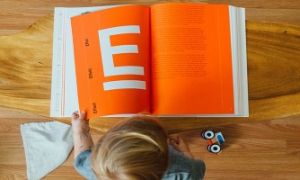A key objective of the National Quality Framework is to promote continuous improvement in the provision of quality education and care services. Every service is required to be assessed and rated for quality by regulatory bodies and self-assessment is one of the most important steps in this entire process. Here is a bit more about the importance of self-assessment in the early care and education context.
What Is Self-Assessment?
In Australia, all education and care services must complete self-assessment to inform the development of a Quality Improvement Plan or QIP. A self-assessment identifies areas for improvement and then the QIP then be used to prioritise these improvements. There should be clear links between your service’s self-assessment documentation and identified priorities for attention in your QIP.
5 Steps
In the context of the assessment and rating process, self-assessment can be understood as a comprehensive cyclical process involving five steps:
- critical reflection of your service philosophy – this means analysing whether your service philosophy reflects its current operation and whether your educators, staff and other stakeholders are aware of the philosophy and what it means.
- self-assessment of service practice against the NQS and the regulatory requirements - essentially checking whether what you ‘do’ in the service meets requirements and guidelines laid down in the National Law, National Quality Standards and approved learning frameworks; if it doesn’t, take steps for prompt correction
- identification of strengths and opportunities for quality improvement – understanding what you are doing well and where you need to improve
- transferal of outcomes of the self-assessment to inform the development or update of your service QIP – use the takeaways of self-assessment to develop a fresh or update an existing QIP
- review and reflection of the self-assessment process – checking whether your self-assessment achieved its purpose.
Documentation
In order to demonstrate to the regulatory authority, that your self-assessment has informed the development and review of the QIP, it is a good idea to document the self-assessment. Though not a mandated requirement, the ACECQA Self-assessment Tool is a free resource that you can use as a ‘starting point’ to plan to improve quality outcomes for children and families. The Self-assessment tool can be used to:
- identify strengths, areas of compliance
- practices that are Exceeding the NQS
- areas and opportunities for quality improvement
- complement and contribute to the development, review and update of your service QIP
Services may choose to apply or adapt the Self-Assessment Tool in a way that meets the needs of their unique service context.
Collaborate
For your self-assessment and quality improvement planning to be most effective, your service should engage not just professionals like educators, the nominated supervisor, service leaders, management, coordinators, educational leaders and other service staff but also take inputs from children, families and the broader community.
In each quality area, there are two or three standards. These standards are high-level outcome statements. Under each standard are elements that describe the outcomes that contribute to the standard being achieved within the service. The following is a list of all achievements under each 7 Quality Areas that can help services identify if they are achieving within each area which can be included in the self-assessment. It also includes documentation evidence required to support each element. Please follow the links to read through each Quality Area.
How To Achieve Each Quality Area
The following guidance is provided to assist services and assessors to consider if practise demonstrates a rating of Exceeding NQS. The indicators provided are not exhaustive, and services may demonstrate Exceeding level in a variety of ways that suit their particular operating environment and approach to practice.
Exceeding Quality Areas Within The NQS
Self-assessment requires all members of your service team to understand the NQS and the related regulatory requirements to effectively reflect on and evaluate current service practice, policies and procedures. a vital tool for this is the Guide to the National Quality Framework, especially Section 3 which has useful information on the assessment and rating process – including self-assessment and quality improvement – as well as a guide to the NQS including introductory statements for each quality area, standard and element that describe the intent and how practices contribute to quality outcomes for all children and families.
Reference:
Importance Of Self Assessment In A Culture Of Continuous Improvement, ACECQA







 As an Educator in Australia, your pay rate falls under the Children’s Services Award 2010. This award states the minimum amount that an employer can
As an Educator in Australia, your pay rate falls under the Children’s Services Award 2010. This award states the minimum amount that an employer can When working as a qualified Early Childhood Teacher (with a university degree) within a service, your rate of pay will come from the Educational Services
When working as a qualified Early Childhood Teacher (with a university degree) within a service, your rate of pay will come from the Educational Services When working as a Diploma Qualified Educator your pay rate is from the Children's Services Award 2010. This Award states your minimum rate of pay
When working as a Diploma Qualified Educator your pay rate is from the Children's Services Award 2010. This Award states your minimum rate of pay When working as a Cert 3 Qualified Educator, your pay rate is from the Children's Services Award 2010. This Award states your minimum rate of
When working as a Cert 3 Qualified Educator, your pay rate is from the Children's Services Award 2010. This Award states your minimum rate of Educational Leaders play a crucial role in their early childhood service by ensuring that the educational program aligns with best practices and supports the holistic
Educational Leaders play a crucial role in their early childhood service by ensuring that the educational program aligns with best practices and supports the holistic In early childhood education and care, ratios are more than a technicality—they are a frontline safeguard. Every child deserves responsive supervision, emotional connection, and developmental
In early childhood education and care, ratios are more than a technicality—they are a frontline safeguard. Every child deserves responsive supervision, emotional connection, and developmental Here’s a comprehensive Mobile Phone and Smart Watch Policy tailored for early childhood education and care (ECEC) services in Australia, aligned with the latest 2025
Here’s a comprehensive Mobile Phone and Smart Watch Policy tailored for early childhood education and care (ECEC) services in Australia, aligned with the latest 2025 With the new national child safety reforms kicking in on 1 September 2025, early childhood services like yours have a real opportunity to lead the
With the new national child safety reforms kicking in on 1 September 2025, early childhood services like yours have a real opportunity to lead the The Sea of Fish Challenge is a national initiative that invites children, educators, families, and communities to create and display fish artworks as a symbol
The Sea of Fish Challenge is a national initiative that invites children, educators, families, and communities to create and display fish artworks as a symbol Across the early childhood education and care sector, educators are sounding the alarm: current staffing ratios are insufficient to deliver safe, meaningful, and developmentally appropriate
Across the early childhood education and care sector, educators are sounding the alarm: current staffing ratios are insufficient to deliver safe, meaningful, and developmentally appropriate


